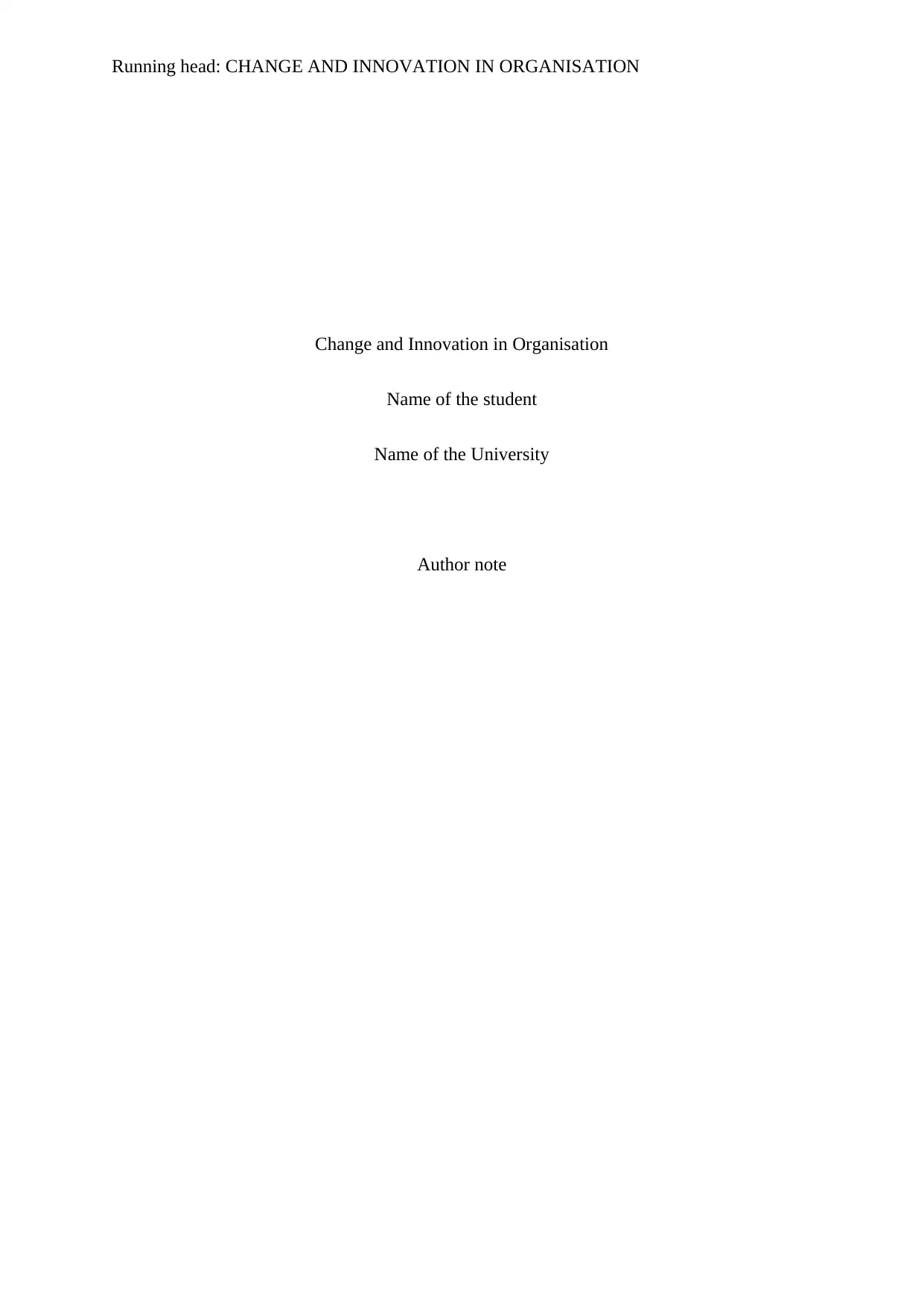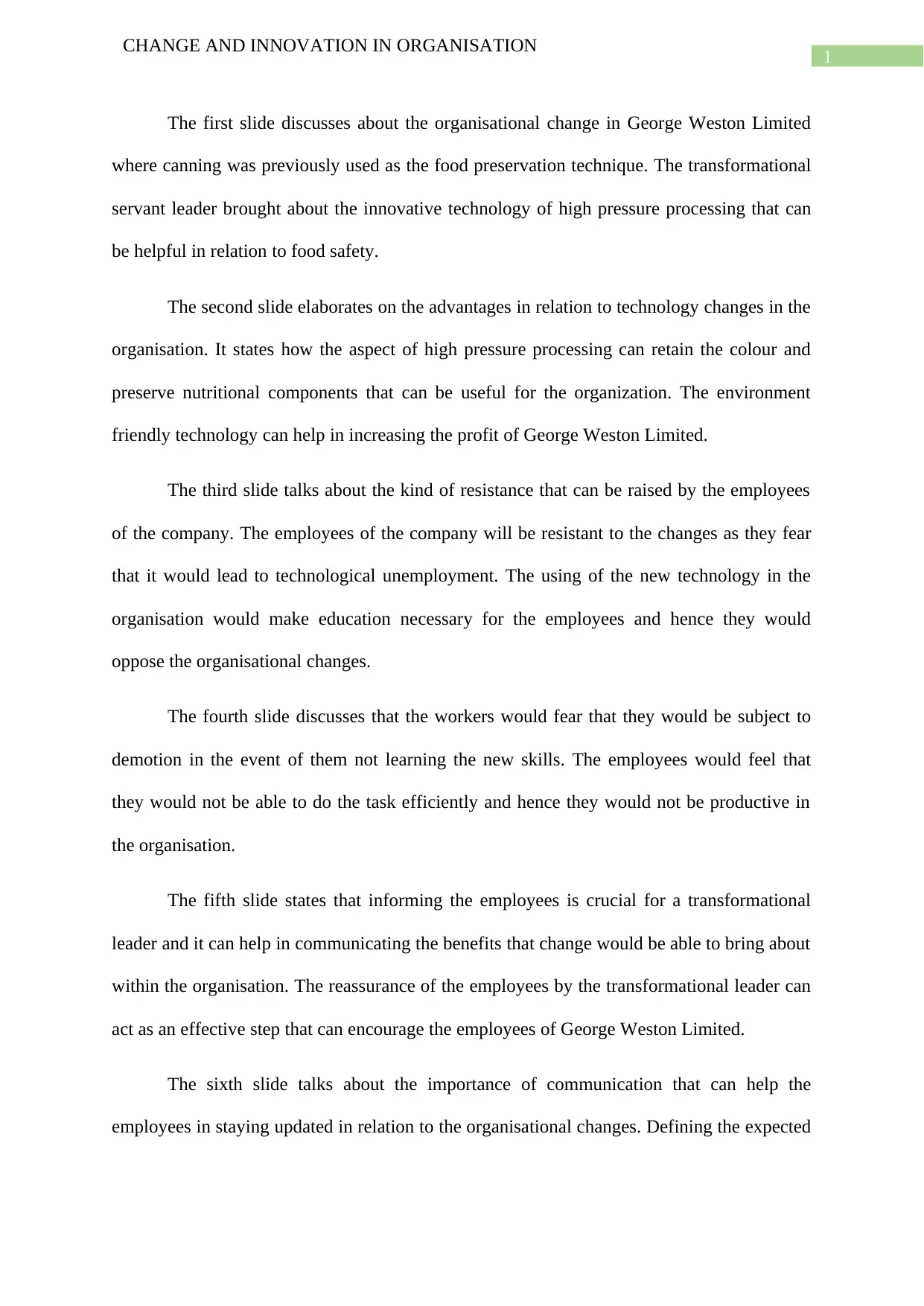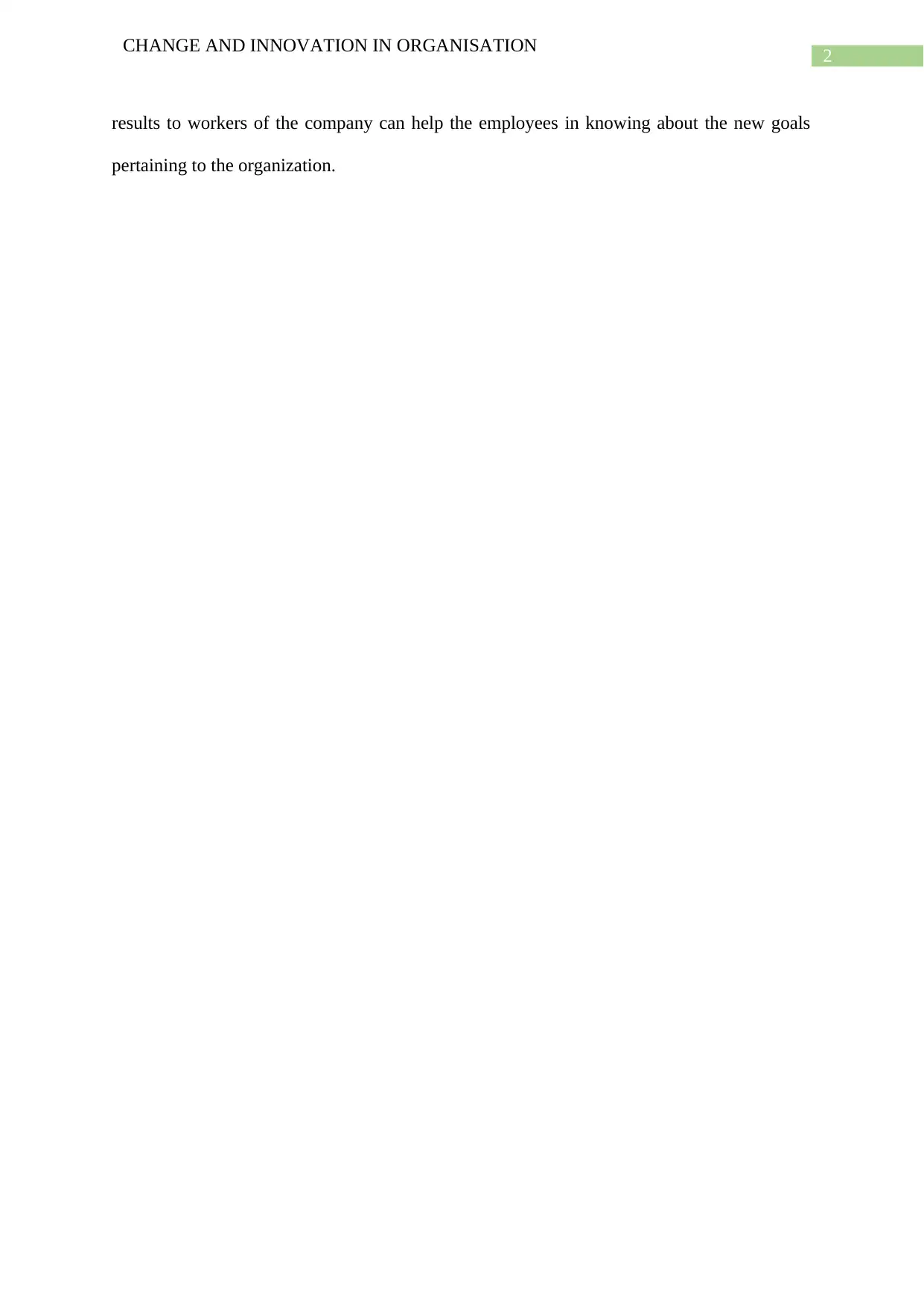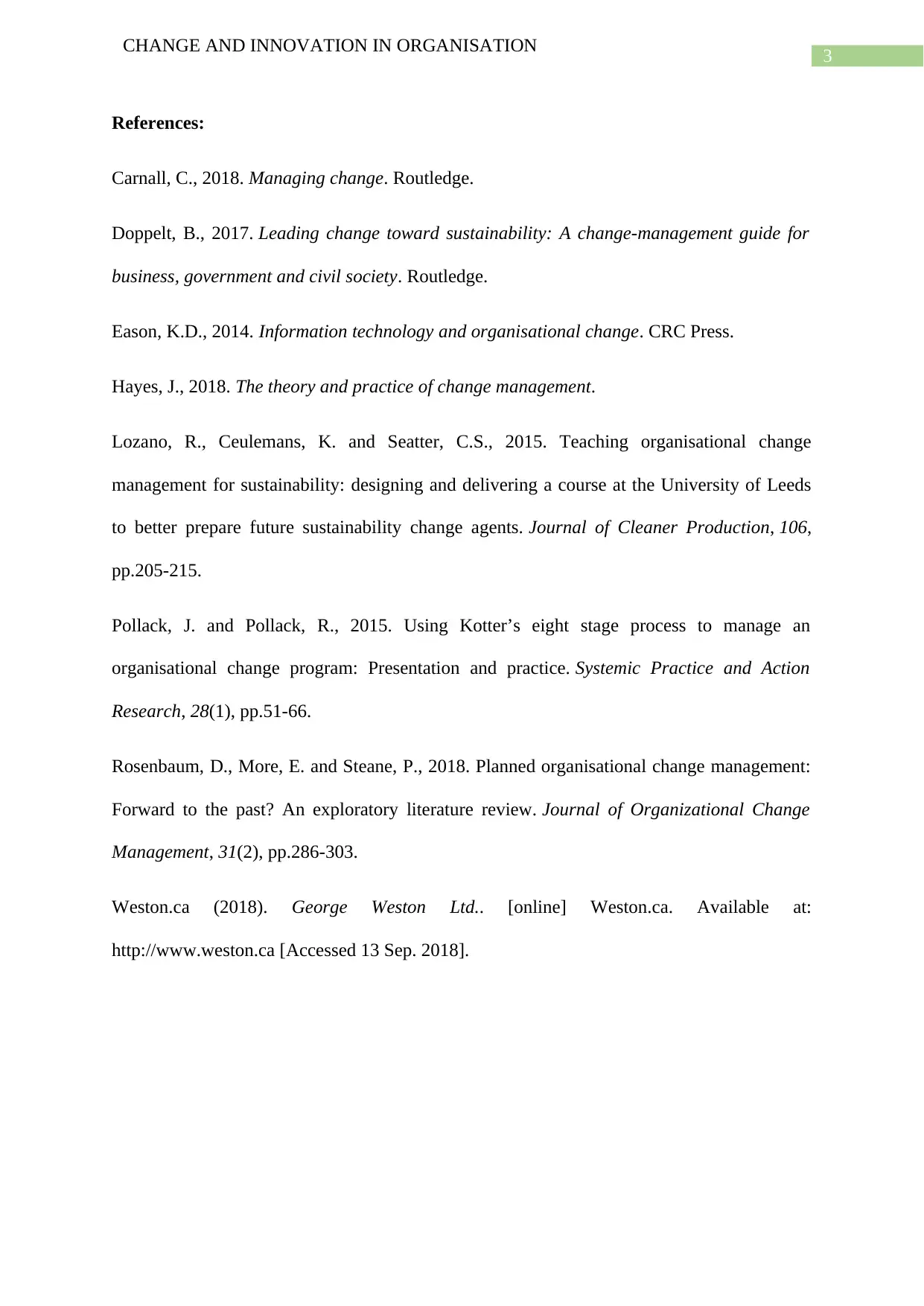LDRS 612: Leading Change and Innovation at George Weston Organisation
VerifiedAdded on 2023/06/10
|4
|594
|176
Presentation
AI Summary
This presentation examines organisational change and innovation at George Weston Limited, focusing on the introduction of High-Pressure Processing (HPP) as an innovative food preservation technology. It highlights the benefits of HPP, including improved food safety, retention of color and nutritional components, and environmental friendliness. The presentation also addresses potential employee resistance to technological changes, stemming from fears of job displacement, the need for additional training, and potential demotions. It emphasizes the importance of communication and reassurance from transformational leaders in overcoming this resistance, ensuring employees are informed about the benefits of change and understand the new organizational goals. The presentation concludes by stressing the role of effective communication in keeping employees updated and engaged throughout the change process.
1 out of 4










![[object Object]](/_next/static/media/star-bottom.7253800d.svg)